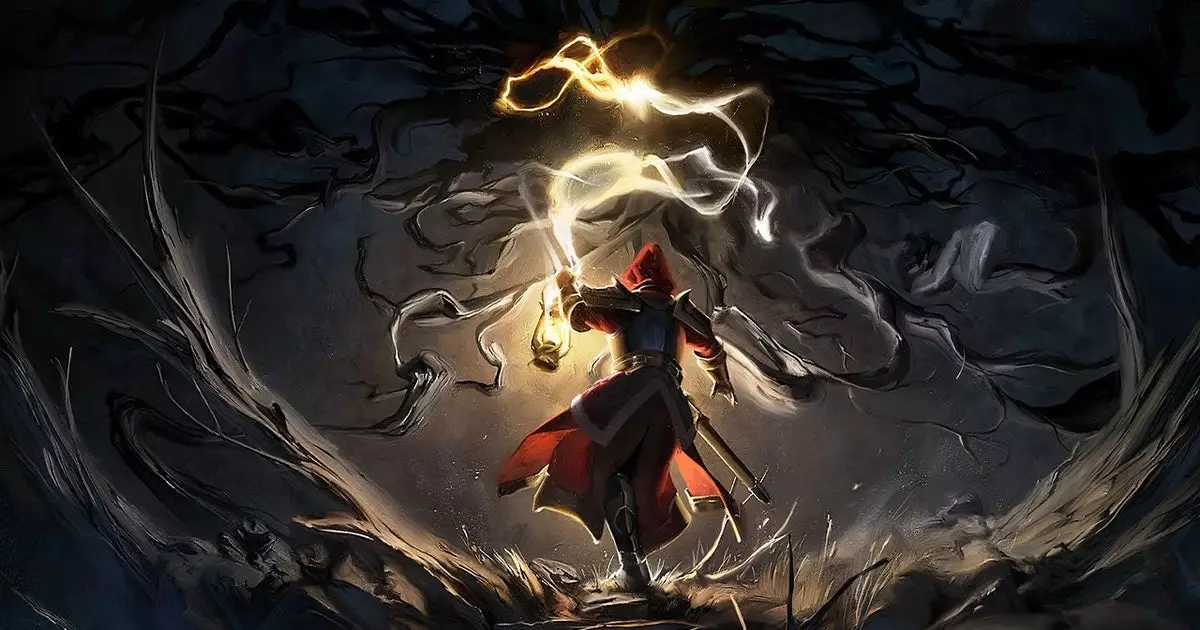When I first came across Mandragora: Whispers of the Witch Tree, my expectations were cautiously low. The world of dark fantasy side-scrollers is a saturated one, often filled with generic tropes and style-over-substance designs. The game initially struck me as another attempt to ride on the coattails of classics like Castlevania, with its gritty aesthetics and RPG mechanics that felt all too familiar. Mandragora seemed like it was simply stacking features—skills, crafting, and a multitude of items—without providing any innovative flair or narrative depth. The presence of Brian Mitsoda, famous for his work on Vampire: The Masquerade – Bloodlines, was a tantalizing detail that drew my attention, but I remained skeptical.
However, as time went on, I found myself intrigued by the conversations blooming around this title. Comments from players who dove into the demo revealed an unexpected enthusiasm, compelling me to reconsider the initial impressions I had formed. Now that Mandragora has launched and I’ve spent time navigating its intricacies, it appears I’ve stumbled onto something that might defy my early notions and instead offer a captivating experience.
Rich Storytelling in a Gloomy Setting
What sets Mandragora apart is its commitment to immersive storytelling. Set in a tumultuous, post-apocalyptic environment under the iron rule of a sinister King Priest, the game weaves a narrative that feels fresh and engaging. This character, reminiscent of Judge Claude Frollo from Disney’s The Hunchback of Notre-Dame, embodies the duality of power—a figure who promises protection from supernatural dangers while harboring a twisted agenda of tormenting witches.
As the player, you assume the role of an inquisitor whose path intertwines with that of tortured witches, culminating in a transformative moment of mercy that imbues you with enigmatic powers. This complexity allows for nuanced character development and an unfolding story that keeps you invested. Instead of relying solely on mechanical gameplay, Mandragora draws players into a storyline laden with rich character interactions and impactful choices that influence your journey.
A Journey Beyond Ordinary Gameplay Mechanics
The early stages of the game introduce players to well-crafted NPCs that populate the world, engaging in dialogues that enrich the narrative experience. The visual direction, characterized by character portraits that might initially seem unsettling, ultimately contributes to the atmosphere of otherworldly tension that defines Mandragora. As you venture through the intricately designed Crimson City and beyond, the atmosphere thickens with grim undertones and vibrant artistry reminiscent of possessed paintings.
In terms of gameplay, the mechanics evoke a sense of nostalgia while also innovating within the genre. Combining the intuitive mechanics of classic games like Castlevania with a robust skill tree and crafting system makes for an engaging experience. The balance between stamina management, evasive combat, and character progression creates a dynamic feel that invites experimentation and strategic planning. The levels are not straightforward corridors; they present twisted paths and hidden areas reminiscent of the labyrinthine designs found in Dark Souls, offering players a sense of discovery as they uncover secrets and unlock travel points.
Animation and Control: A Work in Progress
While the combat mechanics are fundamentally sound, there are moments where animations and control can feel awkward or unpolished. It’s a minor drawback in an otherwise captivating experience. The charm of Mandragora lies in its ability to transform mundane game mechanics into moments of character development and humor, exemplified by the interaction with a merchant you inadvertently offend when breaking crates. Such moments of levity give depth to the game, fostering a connection between the player and the world.
Despite the imperfections, the potential for growth and refinement is evident. The developers are on the right path, focusing not just on gameplay, but crafting an engrossing narrative that pulls the player through its dark corridors. The promise of over 40 hours of gameplay suggests that there will be ample opportunity to forge relationships and make meaningful choices that shape the journey.
Mandragora: Whispers of the Witch Tree is more than just a title in the crowded field of dark fantasy games; it’s an exploration of character, morality, and the intertwining fates of tortured souls in an unforgiving world. My initial concerns have been largely assuaged, and what began as a speculative glance has turned into an engaging voyage. It’s refreshing to encounter a game that honors its narrative roots while embracing the mechanics of modern RPGs. The echoes of the past blend seamlessly with the promise of rich storytelling, inviting players to delve deeper into its enchanting darkness.

